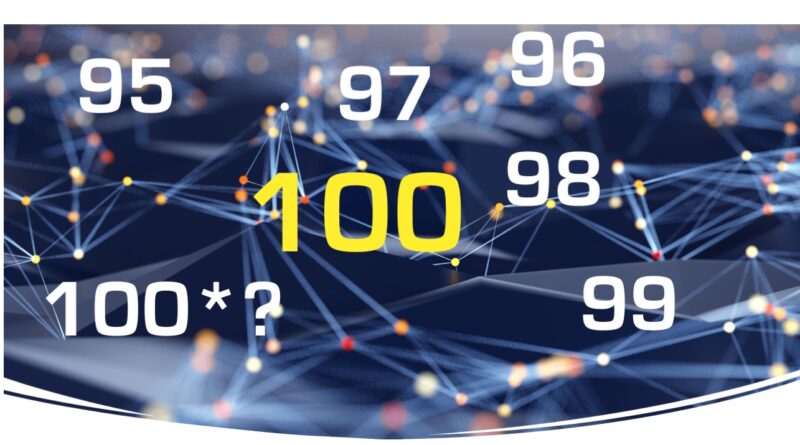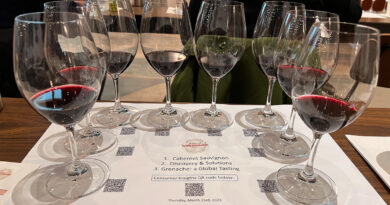The wine critics: what are we to make of Vinous Preview?
I’m fascinated by the world of wine criticism, so much so that a while back I used it as the subject for a comic novel, The Wine Critics. This week, the wine critic world has taken a new twist. One of the leading critic publications is launching an extra subscription service that lets retailers, importers, wineries and possible even wealthy collectors access their ratings in advance. It’s called Vinous Preview, and it has been a contentious subject.
What’s the story? A few weeks ago, according to this thread on US-based wine bulletin board Wine Beserkers, some importers (and possibly retailers) in the US were sent a letter announcing a new feature to the offerings from Vinous, called Vinous review. This extra subscription (no fee was mentioned in the letter: a figure is mentioned in the thread, but this has not been verified) allows subscribers 48 hours notice of scores, plus access to the editorial calendar, plus the ability to submit wines outside of said calendar. A copy of the letter, from Vinous co-founder James Forsyth, is included in the thread.
Vinous is one of the leading wine critic publications, and its founder, Antonio Galloni, comes from a financial background. Galloni worked as a critic for Robert Parker from 2006-2013. He left to start his own venture after Parker sold a big chunk of The Wine Advocate to Singapore investors and appointed Lisa Perotti-Brown as editor in chief. Parker sued Galloni who hadn’t delivered some reviews (there’s an in depth article on this here). The dispute was settled out of court.
Why is Vinous Preview so controversial? When it comes to the top tradable wines, a lot of money is involved. If, as has happened in the past, critic reviews move the market, and thus prices, it is very handy to know in advance of an expected increase in demand. One recent example is when Neal Martin (previously with The Wine Advocate, and now with Vinous, rated Château Palmer 2018 at 100 points. ‘A lot of people made a lot of money off the back of that,’ says fine wine merchant Gareth Birchley.
This will bring for some the opportunity to make a bit of money. It will, of course, only apply to a subset of investment grade wines. Advance notice that top Château X is going to be scored 96 points won’t be a great deal of use; but a tip-off that a particular wine is getting a 100 point score will be significant in terms of its potential value. It also really only applies to wines that are made in reasonable volumes, such as top Bordeaux. A critic might well give one of Eben Sadie’s wines 100 points, but these South African wines are made in small quantities and sell out by 0845 on the morning of their release on the last Monday in July. The critic score won’t change that, and there’s so little that there isn’t a secondary market to influence.
‘I am sympathetic with the argument that the trade doesn’t pay enough to use scores and notes relative to their utility in generating sales,’ says one fine wine merchant who didn’t want to be named. ‘In financial markets data is priced according to its latency (that is prices with a 15 minute delay are free, but live feeds are expensive). So I can see what they are trying to do.’
Critic scores are a vital part of the fine wine ecosystem. If you look at the entry for a wine at Farr Vintners, you’ll see a long list of critic reviews. Here’s an example: https://www.farrvintners.com/wine.php?wine=52818. Critic publications are selling these scores, and they are seen as a valuable currency by merchants who use them to sell wines. In some cases, a very good critic score can increase the market price of the wine, and where these wines are traded fluidly enough that a live market price exists, they can play an important role. Back in Parker’s heyday, Birchley recalls selling the same wine for three different prices on the same day as a result of a top score.
Is Vinous Preview akin to ‘insider trading’? Technically, no. It’s hard to equate wine scores with the sorts of material, non-public facts about a company (for example, a drug just passed a clinical trial) that you had special access to, and which if you were trade off the back of this information could get you in big trouble. A Vinous report is more like the research activity by analysts on a company or market area which is then sold to investors to help them guide their equity purchases. The analysts have information that is valuable; if this information were made freely available then the information would have lost its value. Vinous have every right to make as much money from their information, which costs them quite a bit to acquire.
But there is a sense in which Preview could be seen in a less favourable light. An analyst researches the potential of a company to make money, but what moves the market is the actual performance of that company, not the analyst’s report itself. For tradeable fine wine, the wine quality matters, but ultimately the critic score, which has a somewhat indirect relationship with wine quality, is what drives the market. 100 point wines are famous for being 100 point wines, and it is the score that drives the investment activity. So advance access to the score could legitimately be seen to have an element of insider dealing about it.
Perhaps the biggest issue with Vinous Preview is that it works against the interests of most of its customers. Back in the day, Parker was THE wine critic. His emphasis was that he was on the side of the consumer, and he criticised the British wine writers for being on the side of the trade. Vinous Preview is a massive departure from this attitude. Vinous is on the side of the trade here, not the consumer. ‘For me the pricing scheme is misdirected because it gives professionals an unfair advantage over consumers and looks and feels too much like sponsored insider dealing’, commented one fine wine merchant.
Regular Vinous subscribers may well be annoyed that effectively their subscription has been downgraded somewhat by the emergence of Preview. Previously, all would have had the information at the same time: now, some will be getting a more valuable product, which they will be paying handsomely for, while the regular subscribers will have to shuffle through this new business class cabin on their way to their economy class seats.
‘We are in the modern era when the critic is not necessarily less influential, but is less able to move markets pricewise with scores,’ says Birchley. ‘After Parker resigned, the distribution of who people listen to was spread much more widely. If you are paying [extra for Preview] you might do it for a while if you are a merchant or a customer, but you have to get some upside. You have got to have an instance where you getting that 48 h head start is beneficial to you. If you are paying this and getting a pretty decent southern Rhône report where everything scores between 91 and 96 points, this is not going to change the world and you are not going to get any benefit from that. What you might get benefit from is a wine of relatively large volume at £30 or £40 a bottle and it gets 100 points, and suddenly it rises to £70 or £80 a bottle – a merchant is going to make some money on that.’
‘The difficulty is – and I would never put Vinous in this camp because their reputation is impeccable – if this spreads wider, are people going to be in a situation where to maintain this following,’ says Birchley, ‘in the back of their mind they are looking out for something to be outstanding: something to really make [this expensive preview] worthwhile?’
We have moved a long way from the days of The Wine Advocate being a consumer’s guide to wine, published as a small pamphlet out of Robert Parker’s Baltimore office. Now we are dealing with large critic publications, each with a team of critics. And these critic publications acting as media brands, running events, tastings and working more closely with the trade. Initiatives like Vinous Preview simply reflect that these media brands need to work hard to monetise the content that they are producing, but it is a complicated relationship, because they now rely much more heavily on the trade than in the past, rather than solely on their consumer subscriber base. It will be interesting to see where this goes: has Galloni stolen a march on his rivals, or has he made a miscalculation?
See also: the hundred halters, and the future of wine criticism




